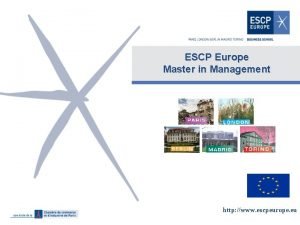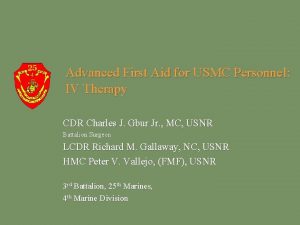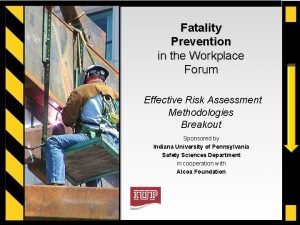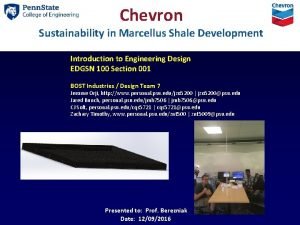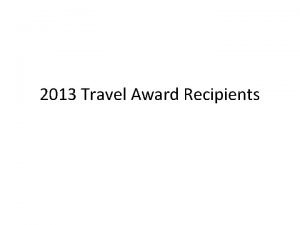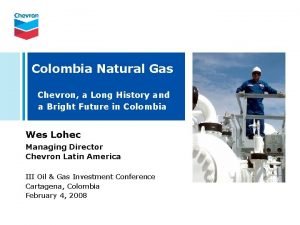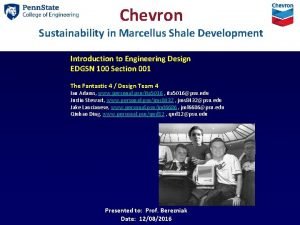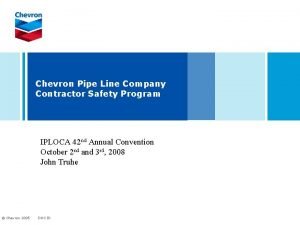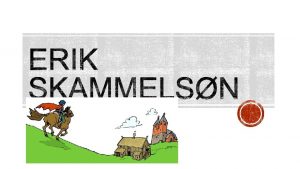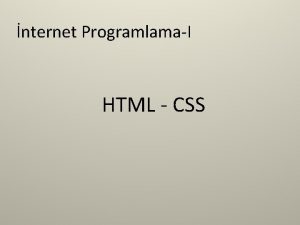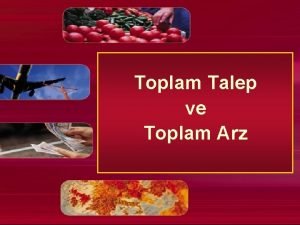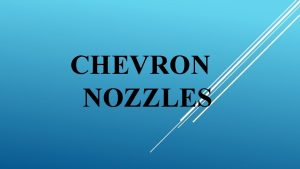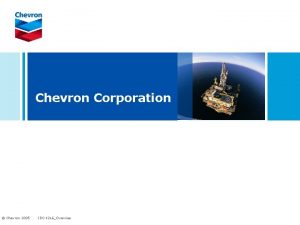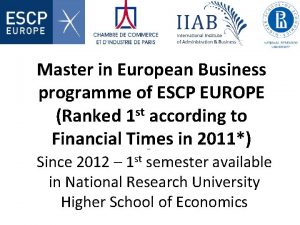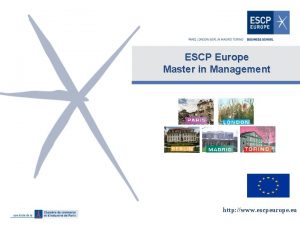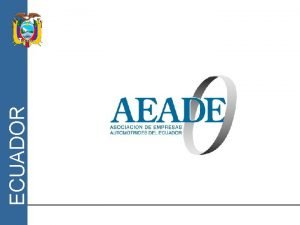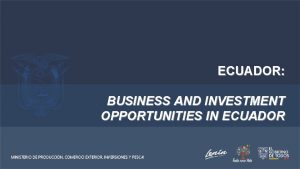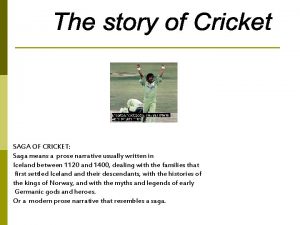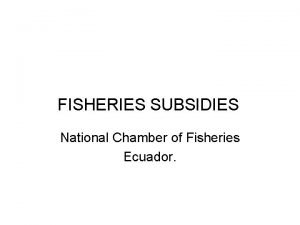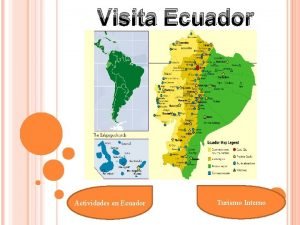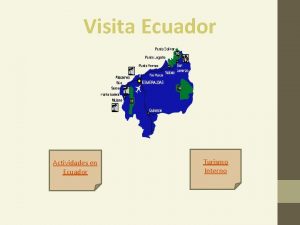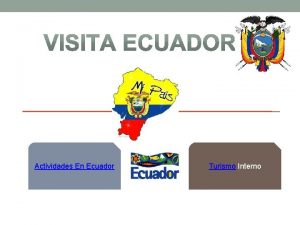The Chevron Ecuador Saga ESCP Europe EXECUTIVE MASTER




















- Slides: 20

The Chevron & Ecuador Saga ESCP Europe – EXECUTIVE MASTER IN ENERGY MANAGEMENT Remy Gerbay 24 April 2012 S

Introduction S Welcome S Session’s topic S Session’s structure S Two parts: S (1) Brief introduction to factual background S (2) History of the different legal proceedings w/ explanation of some key legal concepts.

Factual Background Synopsis Dispute (series of cases) amongst Chevron; indigenous people from the Ecuadorian Amazon, and Ecuador, concerning the massive pollution of rivers and soil.

Factual Background The parties S Chevron S Ecuador S Indigenous people

Factual Background S 1964: Concession contract to Tex. Pet (subsidiary of Texaco) and Gulf Oil Company (now owned by Chevron). S Oriente region partly inhabited by indigenous populations and Ecuadorian farmers. S Dumping of toxic wastewater and other hazardous waste in hundreds of open pits dug out of the forest floor and in rivers. Tex. Pet directed “produced water” from its wells into “open pits”; produced water was heavy in cancer-causing “polycyclic aromatic hydrocarbons (PAHs)” and is responsible for present-day contamination. S The Amazonian people brought a number of actions against Texaco, and later Chevron, before different courts, in the US and in Ecuador, for environmental damage.

Factual Background Chevron’s version: S Chevron asserts that it ‘has never conducted oil production operations in Ecuador (its subsidiary Tex. Pet did). S Texaco signed an agreement with Ecuador in 1995, releasing it from any responsibility, under which Texaco spent $40 m cleaning up the region. S Tex. Pet received a complete release from Ecuador’s government. S Petroecuador is the only entity legally responsible for the remaining environmental issues.

Factual Background The indigenous people’s version S ‘For over three decades, Chevron chose profit over people. […] To save money, Texaco chose to use environmental practices that were obsolete, did not meet industry standards, and were illegal in Ecuador and the United States. The result was, and continues to be, one of the worst environmental disasters on the planet. Contamination of soil, groundwater, and surface streams has caused local indigenous and campesino people to suffer a wave of mouth, stomach and uterine cancer, birth defects, and spontaneous miscarriages. Chevron has never cleaned up the mess it inherited, and its oil wastes continue to poison the rainforest ecosystem. ’ Note: their interest is not entirely aligned with that of the Ecuadorian State.

Legal Proceedings (and the legal issues they raise) S Arbitration v Litigation S Litigation part: S US cases S 1993: Aguinda v Texaco S 1993: Sequihua v Texaco S 1997: Jota v Texaco S Ecuador case S 2003: Lago Agrio litigation S New US cases (after the Ecuadorian judgment was rendered) S RICO

Legal Proceedings (Litigation) S US cases S 1993: Aguinda v Texaco S 1993: Sequihua v Texaco S 1997: Jota v Texaco What is forum non conveniens? S Legal doctrine / rule whereby courts may refuse to accept jurisdiction over matters where there is a more appropriate forum (court) available to the parties.

Legal Proceedings (Litigation) Lago Agrio litigation (2003) S May 2003, a different but overlapping group of Ecuadorians brought action against Chevron before the Superior Court of Nueva Loja, in the Amazonian town of Lago Agrio. S The plaintiffs alleged severe environmental contamination of the land where Texaco’s oil operations were conducted. They also stated that these operations resulted in the deterioration of their health and the environment, and, in particular, led to increased rates of cancer. S 2008, after four years of inspections of the contaminated sites, recommendation by an independent expert to order Chevron to pay $7 -16 billion in compensation. Estimation of the damage increased then to $27 billion.

Legal Proceedings (Litigation) Lago Agrio litigation (2003) S August 2009, video showing alleged member of Ecuador's ruling party bribing the presiding judge in the case. Judge forced to resign. S Government of Ecuador files criminal charges against two of Texaco's lawyers in Ecuador, alleging falsification of public documents in connection with the Texaco-Ecuador settlement, and violation of Ecuador's environmental laws. S In September 2010, the plaintiffs submitted a new assessment of damages for the claim, stating they would stand between $90 and $113 bn

Legal Proceedings (Litigation) Lago Agrio litigation ruling: S February, 2011, Ecuadorian judge ruled against Chevron and ordered the latter to pay $8. 6 billion in damages and clean up costs. The court specified that damages would increase to $18 billion if Chevron failed to issue public apology. S Chevron considers ruling "illegitimate" and unenforceable", and filed an appeal Chevron ‘dismissed the legal processes as fraudulent and a glaring example of the politicisation and corruption of Ecuador’s judiciary’. S January 3, 2012, Ecuadorian Appeals Court upholds the $18 billion judgment. S Same day, Chevron made an extraordinary final appeal to National Court of Justice (Highest court). Process likely to take one to two years to conclude.

Legal Proceedings (Litigation) S US legal proceedings (after the Ecuadorian judgment was rendered) S February 2011, Chevron filed civil lawsuit under the Racketeer Influenced and Corrupt Organizations Act (RICO) in New York against the plaintiffs' lawyer, alleging conspired extortion of up to $113 billion from Chevron through the Ecuadorian legal proceedings. S What is RICO? S Law passed in the 1970’s to prosecute organised crime (i. e. the Mafia). The government uses the statute to pursue criminal cases, but private parties can also file civil RICO suits against each other if they believe there is evidence of a conspiracy.

Legal Proceedings (Litigation) S Potential impact of RICO: S Could prevent the enforcement of foreign judgement in the US (if judgement is in effect obtained through fraud) S Public opinion: associate the plaintiff’s lawyer with mafia S Puts huge pressure on the plaintiff’s lawyers to “throw in the towel”: risk of treble damages in RICO cases

Legal Proceedings (Litigation) S What is an anti suit injunction? S Order issued by a court or arbitral tribunal, at the request of one party, which prevents the opposing party from commencing or continuing other proceedings.

Legal Proceedings (Litigation) What are Amicus Curiae? S An amicus curiae (also spelled amicus curiæ; plural amici curiae) is someone, not a party to a case, who volunteers to offer information to assist a court in deciding a matter before it. The phrase literally means "friend of the court". S Information provided may be a legal opinion in the form of a brief (called an amicus brief), or a testimony that has not been solicited by any of the parties. S The decision on whether to admit the information, and if so what influence to give to it, lies at the discretion of the court. Way for civil society to have a say in private cases

Legal Proceedings (Arbitration) S The arbitration part: S In December 2006 and September 2009, Chevron started international arbitration proceedings against Ecuador before two arbitral tribunals at the Permanent Court of Arbitration in the Hague. S Both arbitrations under the Bilateral Investment Treaty ("BIT") between Ecuador and the United States.

Legal Proceedings (Arbitration) S What is a BIT? S Treaty between the United States of America and the Republic of Ecuador concerning the Encouragement and Reciprocal Protection of Investment’. This Bilateral Investment Treaty ("BIT") was signed between Ecuador and the United States in August 1993 and entered into force in May 1997. S Arbitration is governed by the UNCITRAL Rules (United Nations Commission on International Trade Law).

Legal Proceedings (Arbitration) S Chevron’s requests: Declaration that Ecuador breached BIT by precluding the claimant form receiving fair and equitable treatment regarding its investment (lack of due process in the Ecuadorian court cases). S Status of Case 1: March 2010, tribunal ruled in favour of Chevron. Found that Ecuador's government had violated BIT and international law and awarded Chevron approximately US $700 m in principal damages and interest. S Status of Case 2: February 2012, “Interim” Award on jurisdiction and admissibility has been rendered by the arbitral tribunal. The tribunal has jurisdiction to proceed with the merits of the case (Outstanding).

Conclusions S Great illustration of the potential importance of a multinational’s environmental liability: Potential significant financial liability (punitive damages / US$27 bn) S Potentiality of multiple proceedings: S S domestic and abroad litigation or arbitration Potential lasting impact on company image (proceedings lasting 2 decades) S Great illustration, also, of a company’s capacity to impact on people’s well being (virtually any business decision raises ethical questions; doing business means making ethical decisions)
 Escpeurope.eu
Escpeurope.eu Escp corp
Escp corp Chevron iv taping
Chevron iv taping Chevron figure
Chevron figure Chevron marks brittle fracture
Chevron marks brittle fracture Hiraclite
Hiraclite Chevron sustainability
Chevron sustainability Http://l.sasbu.chevron.net/web/default.aspx
Http://l.sasbu.chevron.net/web/default.aspx Chevron colombia
Chevron colombia Chevron sustainability
Chevron sustainability Why did chevron adopt bpi?
Why did chevron adopt bpi? Abdomen planos anatomicos
Abdomen planos anatomicos Chevron tenets
Chevron tenets Bindirmeli çubuk grafik
Bindirmeli çubuk grafik Frekans serisinin aritmetik ortalaması
Frekans serisinin aritmetik ortalaması La saga humana
La saga humana Plc and blc saga
Plc and blc saga Saga genretræk
Saga genretræk Css sağa yaslama
Css sağa yaslama Uzun dönem arz eğrisi
Uzun dönem arz eğrisi Sola çarpık dağılım özellikleri
Sola çarpık dağılım özellikleri
